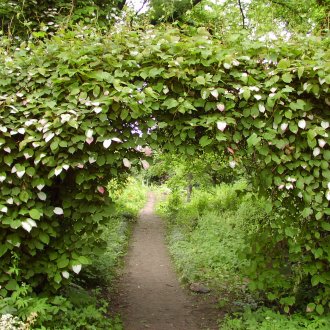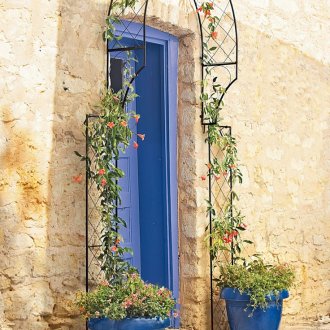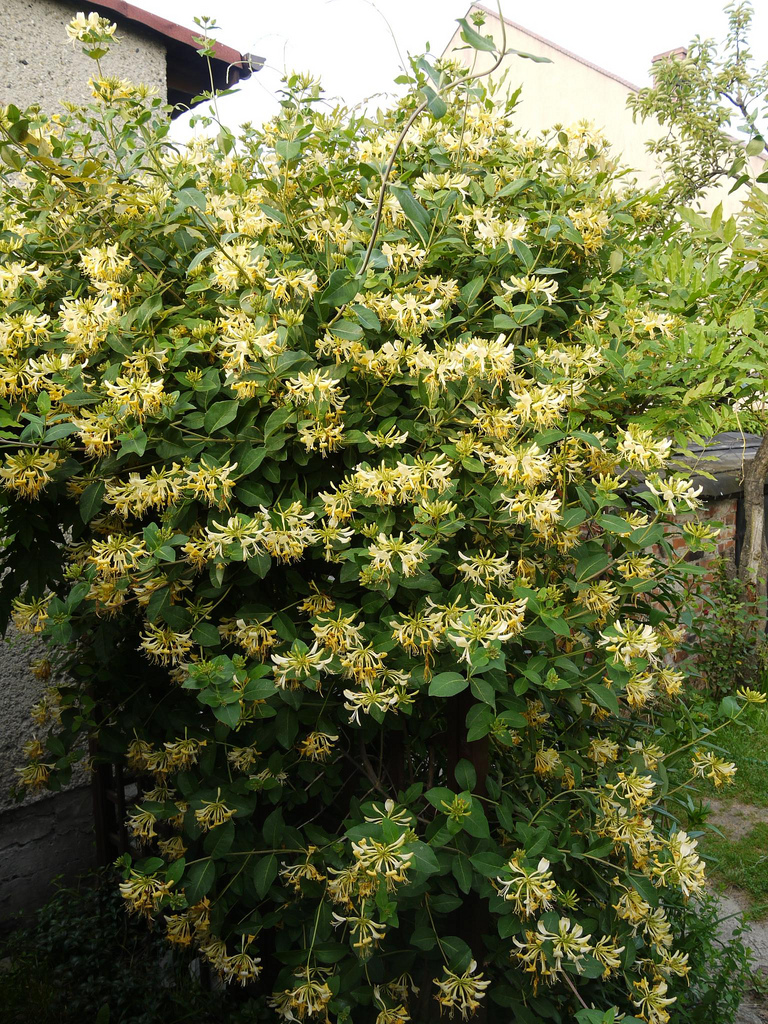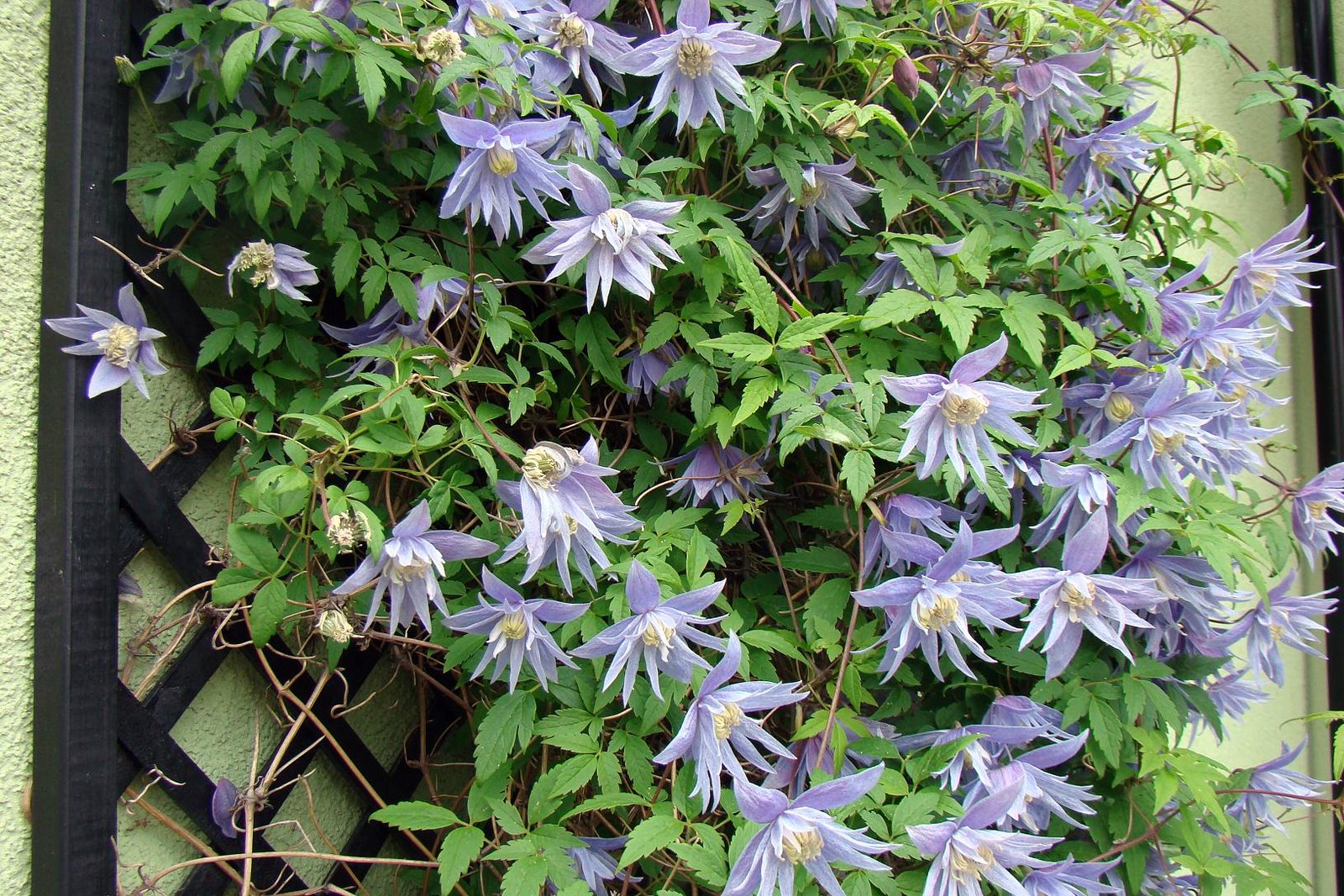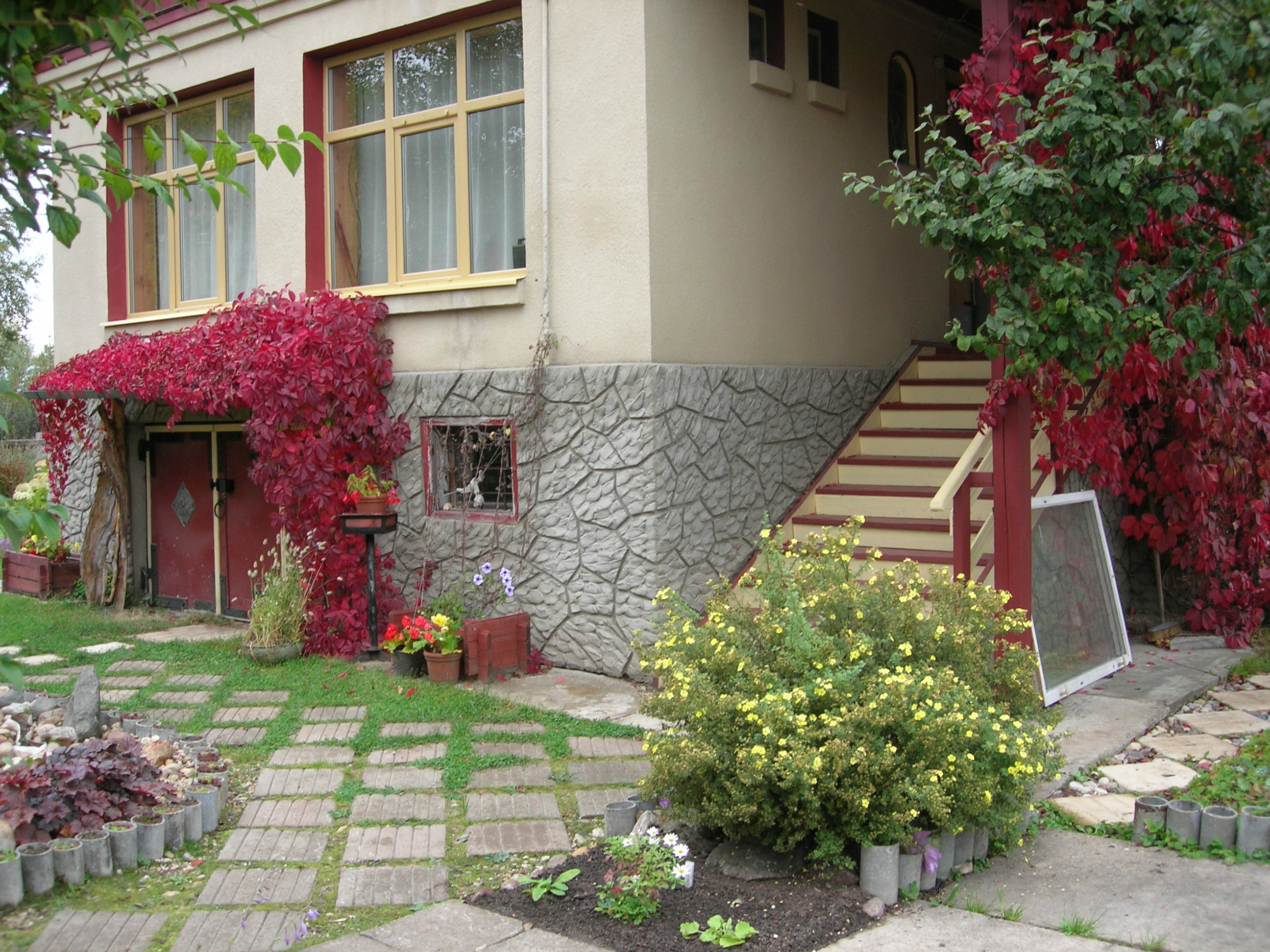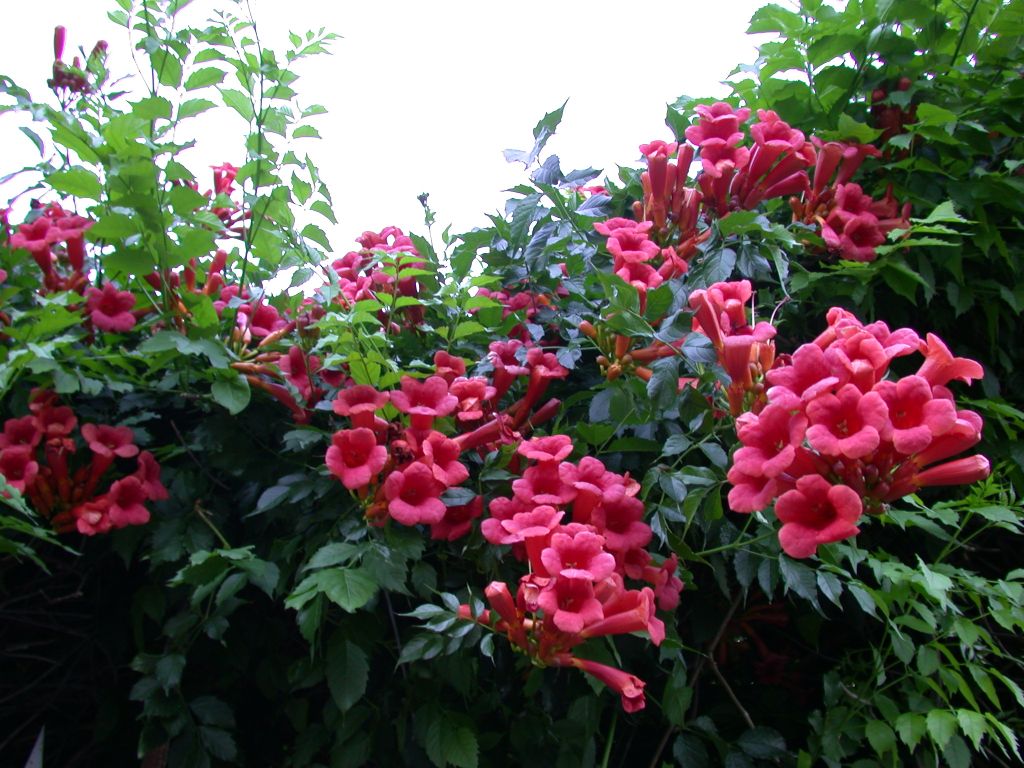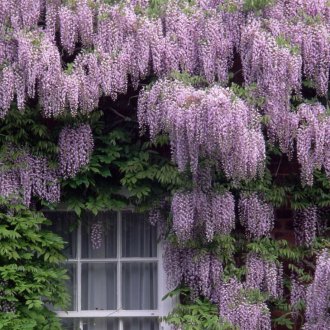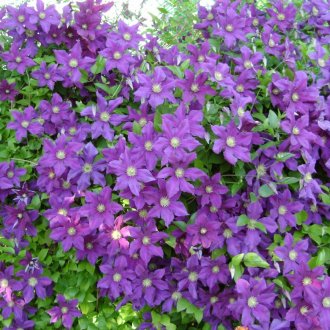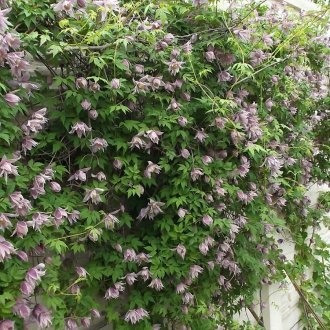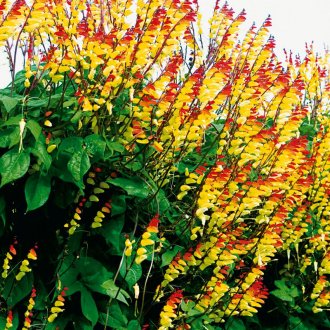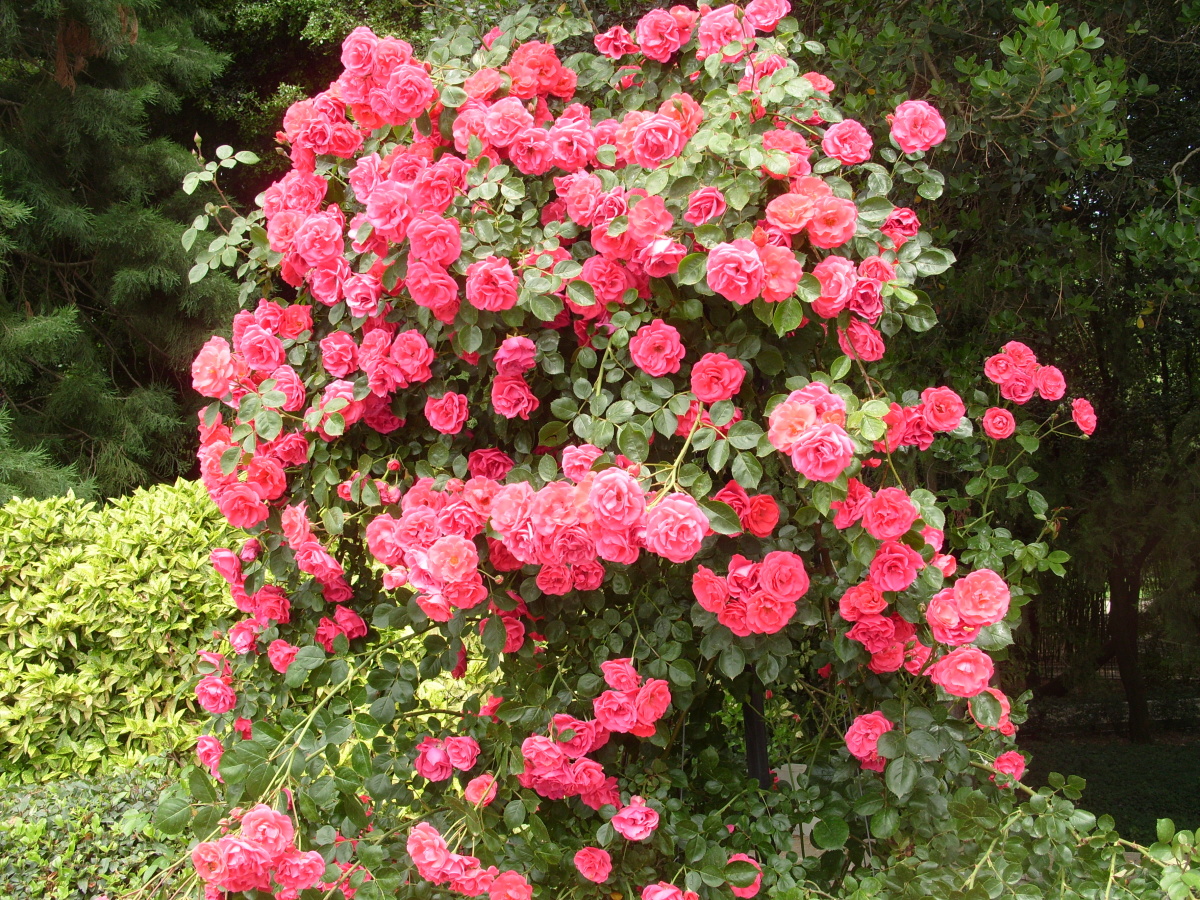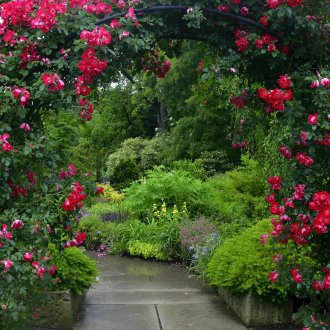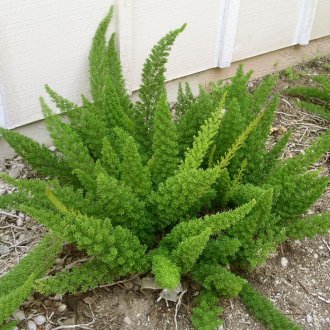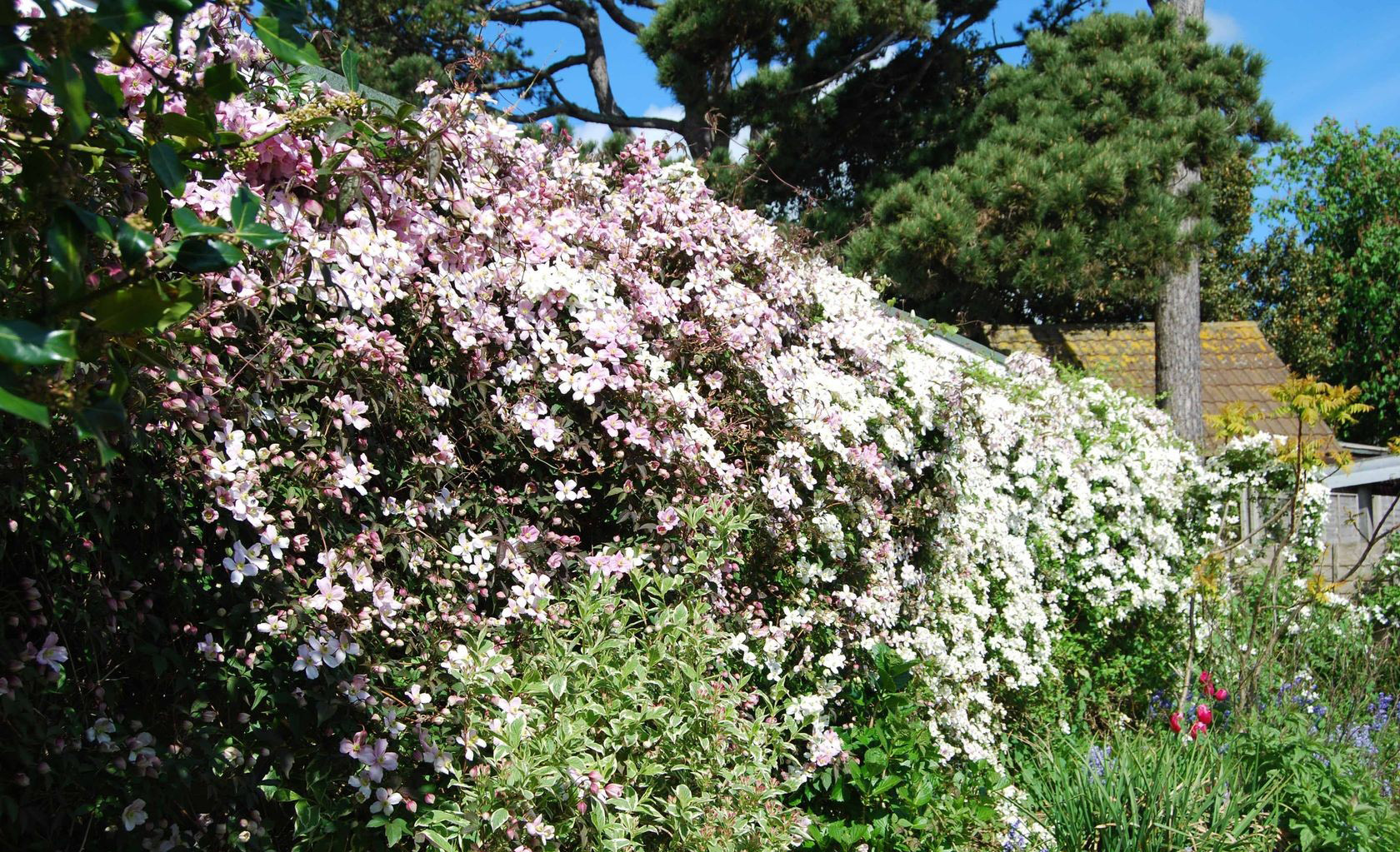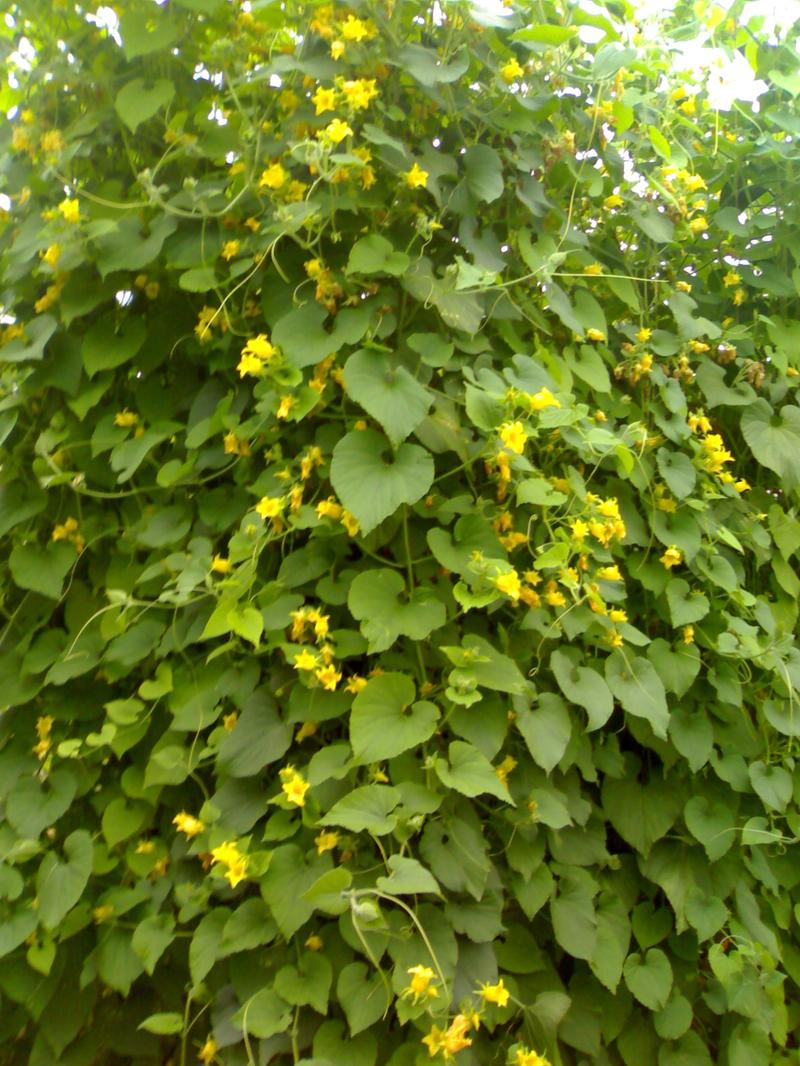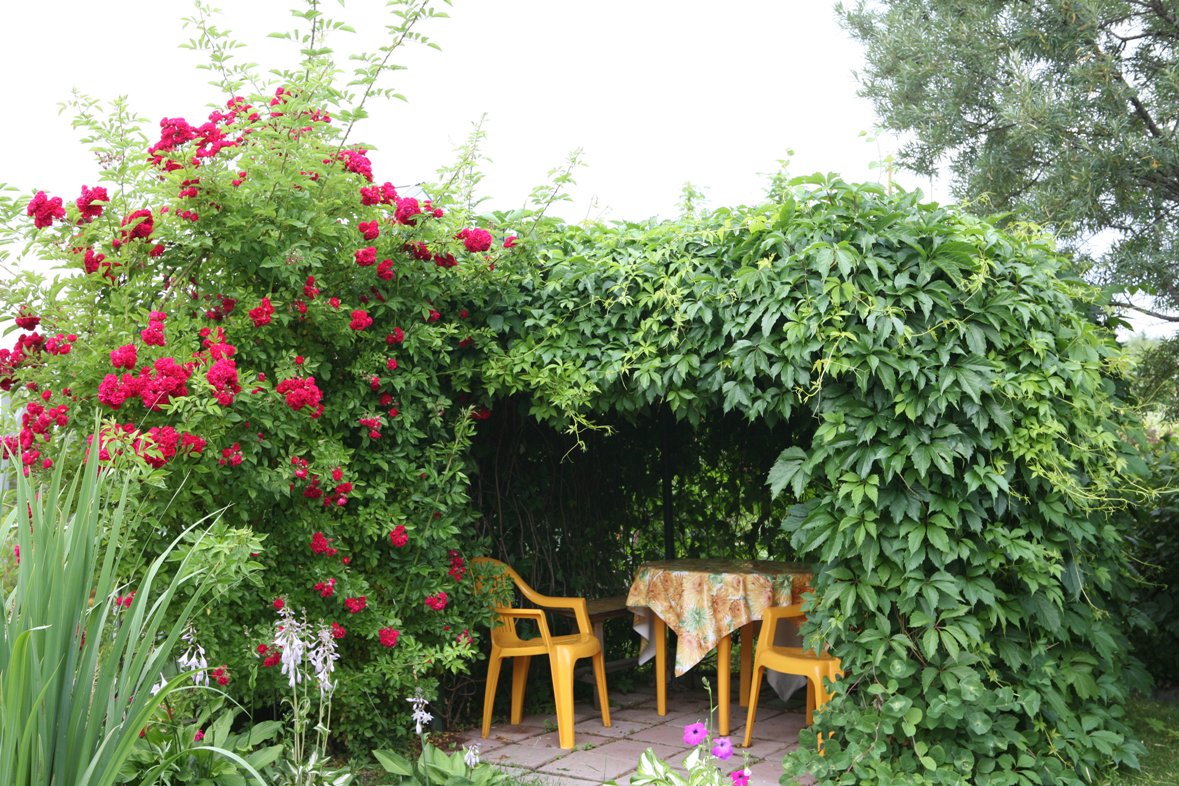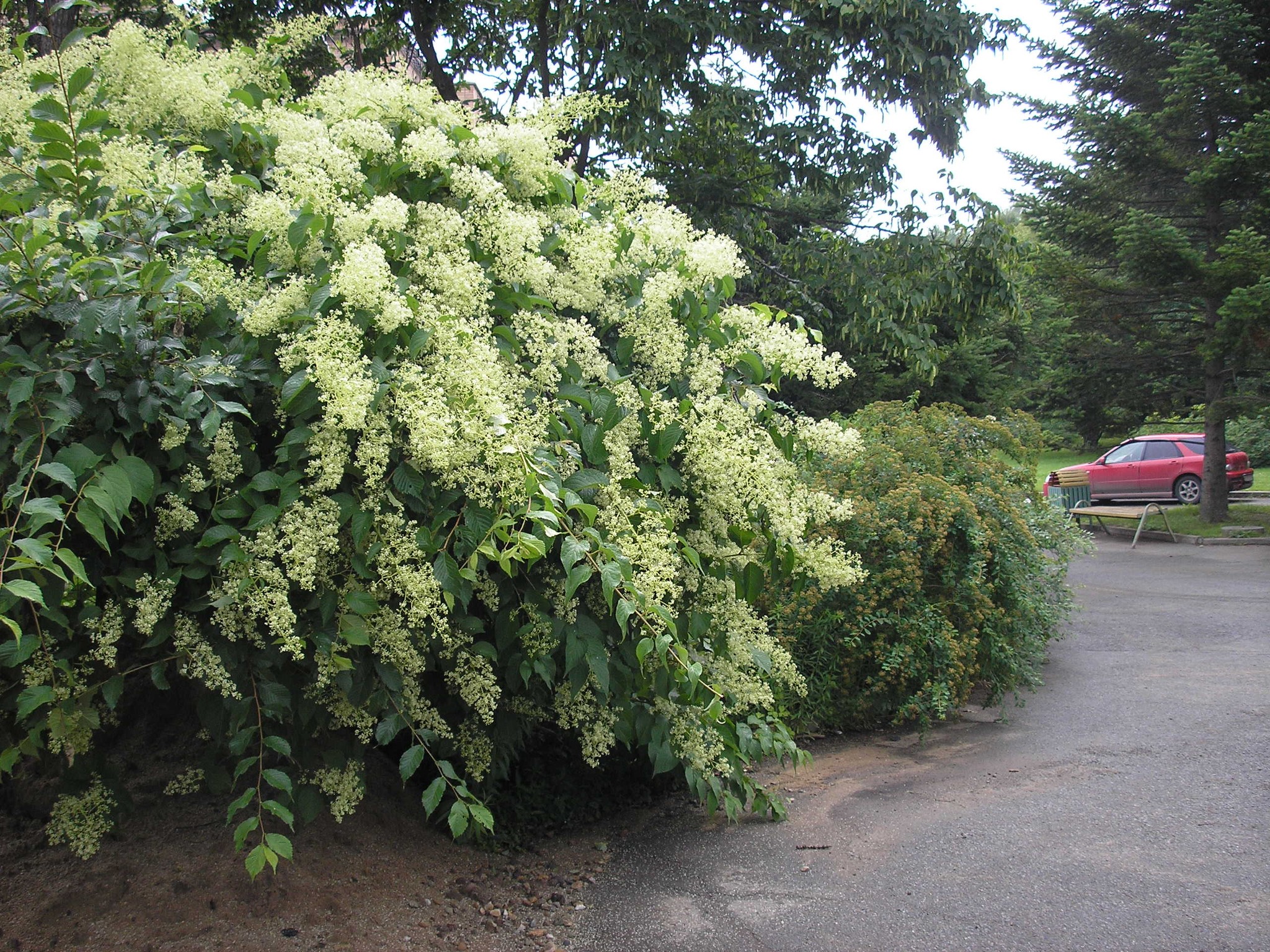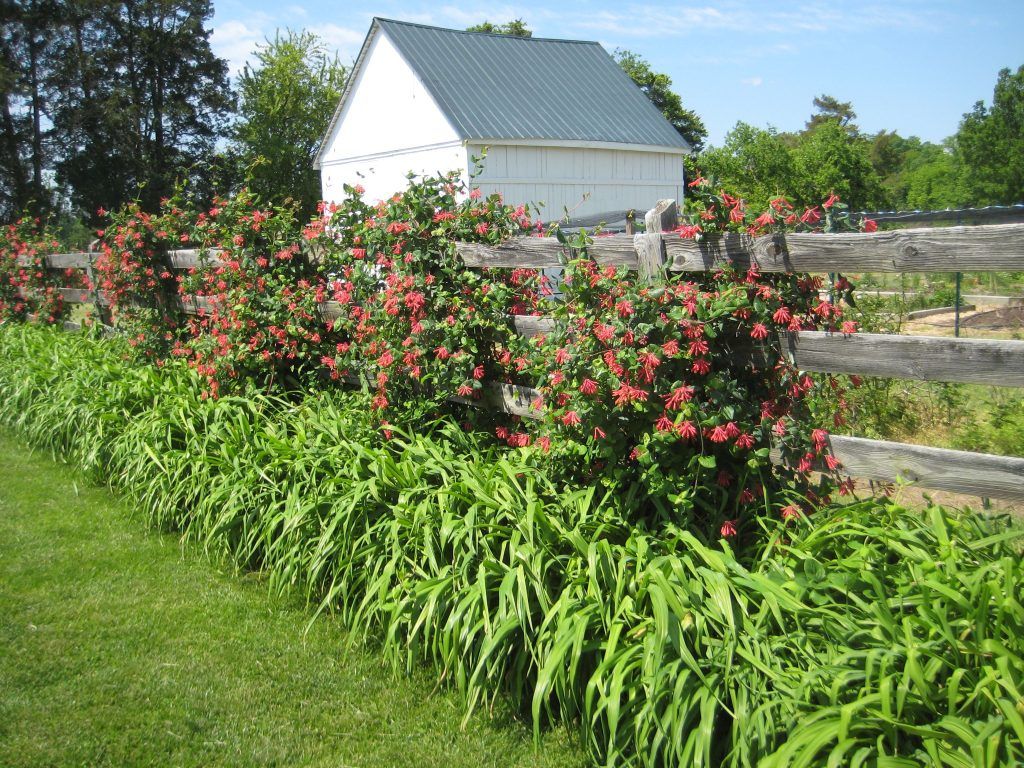Lianas for the garden: a beautiful decoration of any garden and infield (20 photos)
Content
Decorative creepers for the garden are actively used both in professional landscape design and in decorating a summer cottage. The popularity and demand for such plants is not surprising, because the plantings of flowering vines look very impressive, and caring for them does not require special skills and expensive fertilizers.
By climbing plants, you can decorate any part of the house, create an original flower garden and zone the space. Depending on the desired result, you can plant curly, flowering, shade-loving and other types of plants. And if you want to enjoy the beauty of green spaces for several seasons, you should think about acquiring perennial seedlings.
Main characteristics of vines
Woody and grassy, blooming and non-blooming, annual and perennial - any kind of vines for the garden will be a worthy decoration and a continuation of the developed design. Here are some facts about this amazing living decor:
- The common name of these plants comes from the French word "liane" ("bind").
- Due to the large number of species and subspecies, you can create any decoration for the front garden, garden and home garden.
- To give the desired shape to the vines, a special support is made, along which the antennae of the plants rise up and there leaves and flowers and flowers are already blooming.
- The homeland of vines are tropical forests. The brought samples were subjected to a selective breeding method, due to which most species were cultivated and adapted for propagation and development in almost all corners of the world.
- During the "move" to Europe, many varieties of plants lost their ability to create impenetrable thickets. In the wild, lianas for the garden cannot form the lush thickets that their tropical counterparts are famous for.
Classification of Vines
I must say that this word does not give the right to divide plants into varieties. Liana is a life form of plants, a feature that distinguishes them from other representatives of the flora. Today they are conditionally divided into two main groups: perennial and annual creepers.
In the variety of both varieties, both fruit and ornamental plants are found. Let's look at the main types that are most common in our country, with a special emphasis on perennial vines.
Annual plants
Today, there are several hundred species of vines, the lifespan of which is only a few months from planting in the spring to the first autumn frosts. The most popular among them are gardeners and landscape designers consider morning glory, decorative beans, passionflower, etc.
What can unite these plants in one group besides the “short life”? Plant scientists will easily answer this question. For example, in almost all annual vines, the stems do not have lateral branches. But an inexperienced lover of flora will notice that they are all equally beautiful during flowering.
Annual creepers are often used to decorate balconies and terraces. Summer residents love to grow them for the design of hedges.As for the requirements, these beautiful climbing plants should be planted on the sunny side in the soil, which is often digged. To create a unique decor on a personal plot, you can create compositions of 2-3 types of vines.
When planting seeds, it is important to ensure that they do not scatter near flower beds and flower beds. Young unpretentious shoots will quickly grow in dense growth and will supplant other flowers.
Care Features
Annual curly vines are quite patient and do not require special care. The only thing I would like to note is the fact that the vertical support must be built at the sowing stage. The formed roots, if you start erecting the structure during the period of active development of the liana, can be damaged, which will lead to its death and crumbling hopes for a beautiful decoration of the garden.
Perennial creepers for the garden
It’s worth talking about caring for these fast-growing vines separately. Some types of flowers require warming for the winter, so in order for them to please you next year, take care of this in the autumn during the harvest from the summer cottage.
Climbing rose
These flowering lianas for the garden top the list of the most favorite plants of gardeners for a reason. With beautiful buds, they delight guests and owners of the site from mid-summer to late autumn. Flowering is distinguished by splendor and a riot of colors.
A climbing rose loves sunlight very much, so in the shade it always feels very bad. To create a strong support, it is better to use natural materials, in particular wood. Metal structures contribute to the freezing of the plant during the frosty winter months.
I must say that this time is the strongest test for vines. Rosa loves warmly. Born in a favorable climate, it is not able to withstand frost, therefore, during the harvest period, sprinkle copiously on the site with sawdust that will protect the roots from freezing. The stems must be wrapped with non-woven material, which will be a reliable protection during the cold winter.
In early spring, the insulation is removed, and dry branches are cut with garden shears. Do not forget to thin out the bushes every three years, otherwise the young shoots will wither away, and the vine will give less flowers.
Capsis
These evergreen creepers for a garden differ in surprising blossoming. The buds can be compared with a gramophone tube, they are perfectly combined with the pleasant light green color of the foliage.
Capsis surprises with its persistence and excellent tolerance of cold and frost. However, he has a certain peculiarity - the liana recovers for a long time after winter, for which it is often called the "sleeping beauty." But this plant blooms all summer and the first month of autumn.
As for leaving, everything here is surprisingly simple and easy. The only thing you need to pay attention to is the time of planting seedlings. If the capsis does not like the weather and soil temperature, the young shoot can fade. But even when the liana looks lifeless and sad, do not rush to write it off to the nearest garbage can. Perhaps the plant just needs more time to adapt, and in a couple of weeks it will begin to actively grow and develop.
Capsis grows very fast. Over the first few years of life, the shoots can stretch for 10 meters, and after a few more years the landscaping will go in breadth. In order to avoid strong growth, experienced gardeners advise placing the plant in a "frame", or rather, it should develop in a separate, fenced area.
These green spaces have a fairly large weight, so the support for vertical growth must be strong, but you can not cut it at all until the plant becomes untidy.
Actinidia
This perennial creeper impresses with its unpretentiousness and beauty. In the spring, the plant actively develops and delights the eye with lush, delicately green foliage, and in the fall, the shoot acquires a crimson color.This evergreen plant continues its development in the winter - at this time, bright orange berries appear on it.
Shade-tolerant actinidia creeper is very difficult to call. She loves a lot of sunlight, thanks to which this amazing color of leaves appears. To decorate the site, choose its north-eastern, eastern and western sides.
If the climate is not the warmest spring, the vine should be planted on the north side of the house or fence. Due to insufficient light, actinidia begins to bloom later than usual, buds appear later, which protects the plant from unexpected spring frosts.
Wild grapes
Curly wild grapes perfectly clings to the walls, which allows you to create truly unique and intricate designs. He braids his support so effectively with his leaves that the surface under the undergrowth is not visible at all. This liana looks especially beautiful in the fall, when its leaves become red.
The plant feels great anywhere in the area, for him the main thing is to have a reliable support. Liana has a fairly large weight, so, for example, wood slats can withstand the pressure of only a young plant. Most often in the design for wild grapes are used nets, fittings and ropes.
After the color has passed, the first berries begin to appear on the plant. Later, closer to frost, the grapes dump all the foliage, leaving only juicy fruits.
The unpretentiousness of the plant lies in the lack of care. You only need to cut off unnecessary branches that do not fit into the big picture. The only thing to watch out for is the young shoot. Grapes falling to the ground can turn into young shoots in spring that appear in the most unexpected places.
Honeysuckle
In the understanding of many gardeners, this plant is associated with a bush. It's a delusion. Today, there are a huge number of plant varieties, including creepers.
Not all honeysuckle fruits can be eaten. Some species have an incredible aroma, beautiful flowering and original foliage, rather than juicy and tasty berries. Honeysuckle buds usually open in the evening and, exuding a magnificent smell, attract a large number of butterflies, which only complement the aesthetic appeal of a hedge or a country house.
Growing this plant is a true pleasure for the gardener. It does not require special care, and it is impartial to the soil. Honeysuckle grows best in loamy and sandy loamy soils, in places where there is a lot of heat and sunlight.
Honeysuckle bypass many types of pests, and winter does not pose any danger to it. After frosts, young shoots can freeze, so in autumn the plant must be removed from its support, covered with non-woven material and attached with clothespins. If winters are characterized by heavy snowfalls, a two-year plant can not be covered.
Trimming a creeper must be done once a year - in late autumn. For successful development, next year, the top and shoots lying on the ground are cut off from the honeysuckle.
